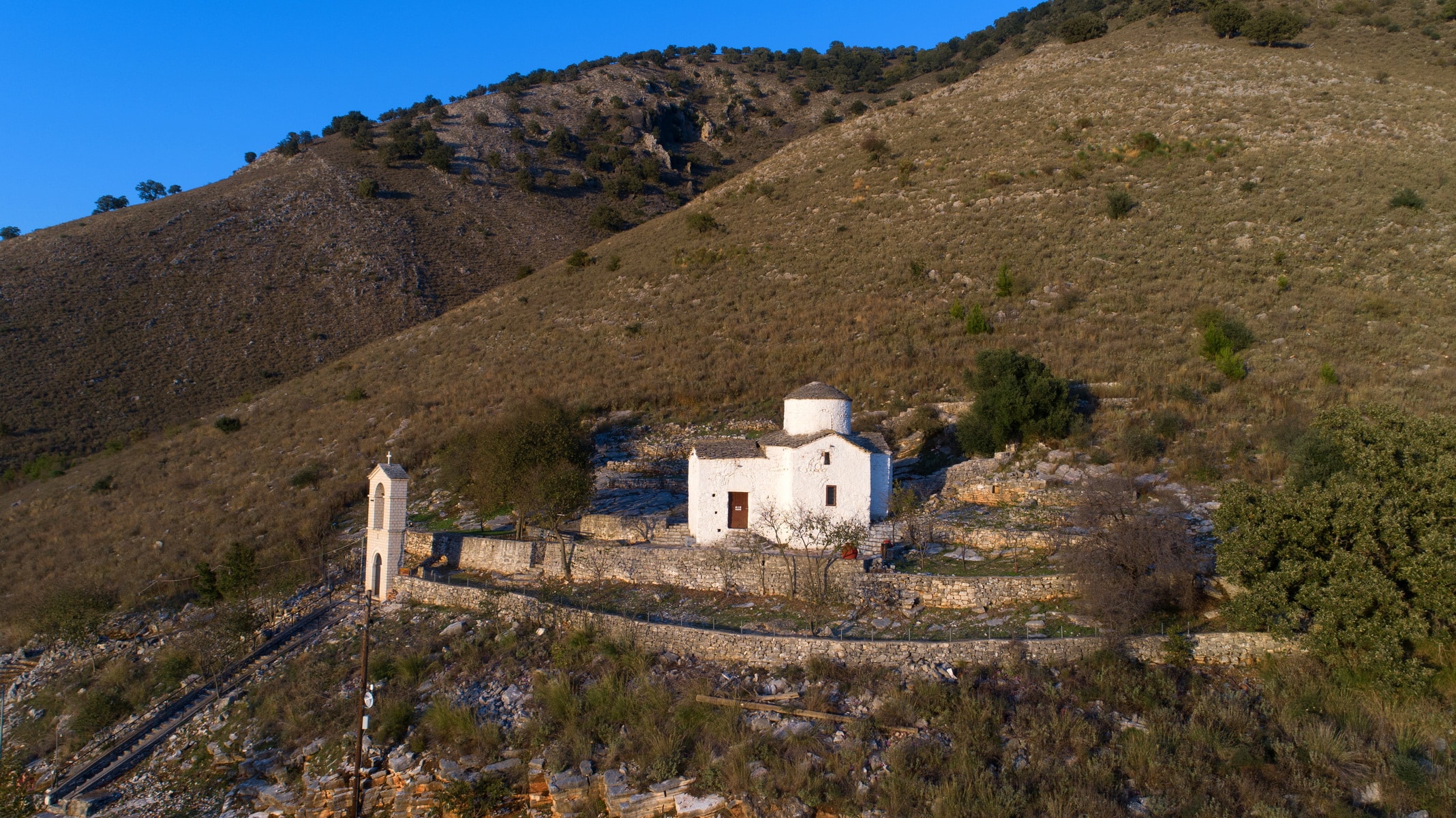The cave: The cave, impressive for its size and outcrops, has an opening of 4×4 meters and is up to 30 meters deep. The access to the interior is from the church of Agia Paraskevi’s north, where a steep staircase leads to the cave’s underground chamber. The foundations of a building, which was probably a chapel, have been found in this chamber and suggest that the opening was a place of worship from ancient times. According to the inhabitants, water drips from stalactites on the 26th of July, the day of the saint’s feast, on a well next to the remains. There is an elongated area in the right part of the cave that remains unexplored.
History – Studies: There are no written testimonies about the temple and the cave. In the years of the revolution of 1821, the church was set on fire. Parts of the wall and the dome were rebuilt in the last century. The monument’s architecture was first studied by the archaeologist, P. Vokotopoulos, who dated the church to the second half of the 11th century according to its morphological data.
Architecture: The church, dimensions 10.85×6.70m, belongs to the type of free cross. It has a tall, cylindrical dome and a square narthex to the west that extends the vertical antenna of the cross. To the east, it ends in a semicircular arch.
Five entrances led to the church. There were two in the main temple, on the north and south side, and one on the three sides of the narthex (north, south, and west). Today only the entrances from the north and west side of the narthex are in use, and the rest have been built. The oldest church of St. Vasilios of the Bridge belongs to the same architectural type.
Exterior decoration: The masonry consists of irregular stones and the roof of gray slate. The exterior decoration consists of a serrated band defining the drum’s perimeter and the dome’s windows. The same band seems to have circled the entire monument, as evidenced by the remains on the temple walls.
Interior decoration: The church is covered by arches in the interior, while four niches are formed in the thickness of the wall on the north and south side (transverse antenna of the cross). The wall surfaces inside are plastered, without frescoes, while the wooden iconostasis was placed probably in the 19th century.
Despite the lack of painted decoration, the monument is of great interest belonging to the mid-Byzantine period. Along with the churches of Saint Dimitrios Katsouris, Saint Vassilios of the bridge, and Panagia of Koronisia, it is an architectural sample of the period before the Despotate of Epirus’ foundation.
The Church of Agia Paraskevi of the dragon has been designated as a historical monument.












